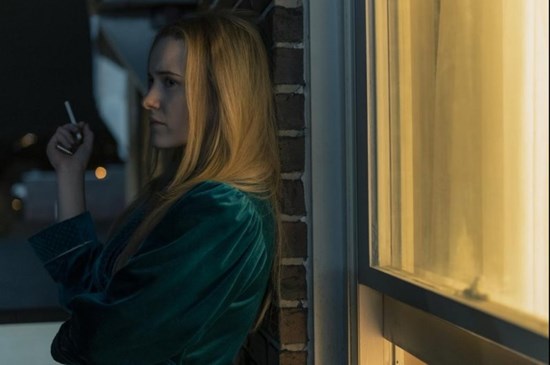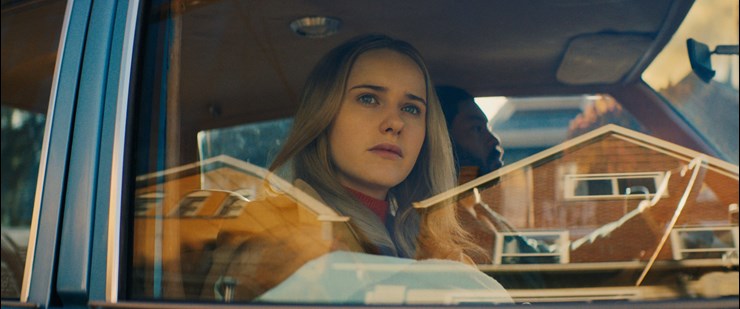by Mark Dunsmuir, Fstoppers
If you haven’t had a chance to watch Julia Hart’s recent film, I’m Your Woman, make a point to add it to your list. Bryce Fortner’s photography isn’t just eye-candy, it shows what you can do when you use style along with intention.
I first watched the trailer for I’m Your Woman a few months ago. I was immediately attracted to the depth of the color palette and what seemed to be a battle between warm and cool tones. Watching the entire film, I was enthralled with the direction Fortner took his colors. I recently had a chance to speak with Fortner about his work on the film.
Given my love of color, I asked Fortner how he developed his ideas for the film’s palette of deep tones and battling temperatures. Fortner explained that he reads through his scripts while imagining the colors scene by scene. Once he’s put together his broad strokes, he makes time to talk with the director. Fortner’s plan is to always try to have these planning conversations on the front end, before he’s knee-deep in lighting gear and the demands on a director’s time stretches them too thin.
In this case, Fortner and Hart sat down early in the production process to talk about how the film should have a 70s crime film tone to it. Their intention was to work with a very natural palette unless there was something important to say, unless there was intention.
If you’ve read my reviews, I’m a big fan of intention over style. Just because something is pretty doesn’t mean that it has depth. Pretty is easy. Making depth pretty is art.

Watching the film a second time around, I found myself trying to keep track of what Fortner’s shifts from warm to cool meant. Many of the film’s scenes take place either outside, in cool moonlight, with points of warm light, or inside, in warm light, with windows out into the cooler night. The film alternates between what feels safe and what implies danger. Sometimes, the points of warm light look like a beacon of hope for the protagonist, Jean, stuck outside in the dark. Other times, we see Jean, swallowed up by impending doom, locked inside warmly lit rooms, yearning to escape out a window or door bathed in cooler light. The confusion of temperatures that Fortner and Hart create reflect the confusion of that Jean feels — a civilian, thrust into the world of low-rent gangsters trying to tell which end is up.
I wanted to ask Fortner about two scenes in particular: the car chase scene and the nightclub scene. In both instances, working within budget, Fortner used the camera and lighting to help tell the story.

Most of the film is set among blocks of solid colors. The nightclub scene, on the other hand, is a jumble of flashing lights and colors. Again, it’s Fortner and Hart’s intention to set the stage this way that helps to tell the story of Jean’s panic.
On the opposite end, the car chase removes much of the color that dominates the rest of the film. Instead, Fortner turns out a very dark look. Creating deep shadows and deciding to wet down the pavement to keep shadows even darker almost works to remove color completely. It’s not that the scene looks black and white, just colorless. In this bleak, almost empty gloom, the audience comes to understand that Jean is alone, separated from her protectors. Here, Jean is left to harness the violence she’s witnessed for most of the film if just to get out alive.
I asked Fortner how aspiring cinematographers and directors can achieve the look he uses in I’m Your Woman. Fortner told me that when he looks for projects he is drawn to stories he can’t help but visualize. So, from his perspective, it’s important to make sure that you’re telling stories that you can’t help but see in your mind’s eye. If you come up with an idea or read a story that forces you to see the moving pictures in your head, you’ve found a story you should to tell. Once you have your story, Fortner suggests that you recognize other films as inspiration without aiming for imitation. For Fortner, developing ways to get his own emotions onto the screen is the key. Mimicking someone else’s technique will never help you tell your own story.
Circling back to the idea of intention, if you’re using someone else’s vision as a roadmap, you’re never going to be able to tell your own stories with any depth. From Fortner's point of view, the intention to light something, or to move a camera in a particular way, has to be your idea, otherwise, it’s just style without depth, without intention.
All images from Amazon Studios' I'm Your Woman.